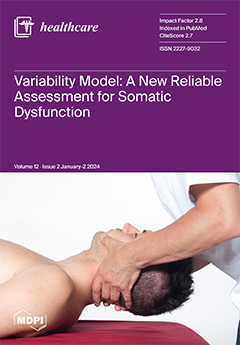Open AccessCase Report
Corynebacterium striatum Periprosthetic Hip Joint Infection: An Uncommon Pathogen of Concern?
by
Athanasios Galanis, Spyridon Karampitianis, John Vlamis, Panagiotis Karampinas, Michail Vavourakis, Christos Vlachos, Eftychios Papagrigorakis, Dimitrios Zachariou, Evangelos Sakellariou, Iordanis Varsamos, Christos Patilas, Sofia Tsiplakou, Vasiliki Papaioannou and Spyridon Kamariotis
Cited by 2 | Viewed by 2692
Abstract
Background: Total hip arthroplasty is indubitably a dominant elective surgery in orthopaedics, contributing to prodigious improvement in the quality of life of patients with osteoarthritis. One of the most potentially devastating complications of this operation is periprosthetic joint infection. Immunocompromised patients might be
[...] Read more.
Background: Total hip arthroplasty is indubitably a dominant elective surgery in orthopaedics, contributing to prodigious improvement in the quality of life of patients with osteoarthritis. One of the most potentially devastating complications of this operation is periprosthetic joint infection. Immunocompromised patients might be afflicted by infrequent low-virulence organisms not typically detected with conventional procedures. Consequently, employing advanced identification methods, such as the circumstantial sonication of orthopaedic implants, could be crucial to managing such cases. Case Presentation: We present a peculiar case of a 72-year-old female patient suffering from a chronic periprosthetic hip infection due to
Corynebacterium striatum. The pathogen was only identified after rigorous sonication of the extracted implants. The overall management of this case was immensely exacting, primarily because of the patient’s impaired immune system, and was finally treated with two-stage revision in our Institution. Literature Review: Although copious literature exists concerning managing periprosthetic hip infections, no concrete guidelines are available for such infections in multimorbid or immunocompromised patients with rare low-virulence microorganisms. Hence, a diagnostic work-up, antibiotic treatment and appropriate revision timeline must be determined. Sonication of extracted implants could be a powerful tool in the diagnostic arsenal, as it can aid in identifying rare microbes, such as
Corynebacterium spp. Pertinent antibiotic treatment based on antibiogram analysis and apposite final revision-surgery timing are the pillars for effective therapy of such infections. Clinical Relevance:
Corynebacterium striatum has been increasingly recognized as an emerging cause of periprosthetic hip infection in the last decade. A conspicuous rise in such reports has been observed in multimorbid or immunocompromised patients after the COVID-19 pandemic. This case is the first report of
Corynebacterium striatum periprosthetic hip infection diagnosed solely after the sonication of extracted implants. This paper aims to increase awareness surrounding
Corynebacterium spp. prosthetic joint infections, while highlighting the fields for further apposite research.
Full article
►▼
Show Figures






